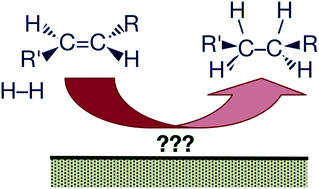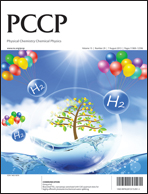A personal perspective is offered on the state of the art of our current understanding of the mechanism of olefin hydrogenations promoted by transition-metal catalysts. Much is known about these reactions, but many key issues remain poorly understood. It is acknowledged that these reactions take place on surfaces covered with strongly adsorbed carbonaceous layers, but the role that those play in the catalysis is still in question. The active adsorption state of olefins that converts to the alkanes has been identified as a pi-bonded external precursor, that is, as an olefin weakly adsorbed on top of a first layer of strongly adsorbed organic fragments, but the specific details of the interaction of those pi-bonded intermediates with the metal and the way they incorporate hydrogen atoms to produce surface alkyl intermediates need to be worked out still. Molecular hydrogen is known to dissociate on the metal to yield the surface atomic hydrogens that participate in the hydrogenation steps, but its adsorption kinetics is affected by the carbonaceous layers in ways not well characterized to date, and the possible the participation of sub-surface or bulk hydrogen species has been advanced but not generally proven. Knowledge of the energetics and dynamics of the formation of the alkyl intermediates, key in these hydrogenations, is still by and large undeveloped, and the competition between the beta-hydride and reductive elimination steps from that species that define reaction selectivities has been barely quantified. Bridging the pressure and materials gap between studies with single-crystals under vacuum and more realistic catalytic conditions has offered additional challenges. Some experiments that may answer these questions are proposed.

You have access to this article
 Please wait while we load your content...
Something went wrong. Try again?
Please wait while we load your content...
Something went wrong. Try again?


 Please wait while we load your content...
Please wait while we load your content...